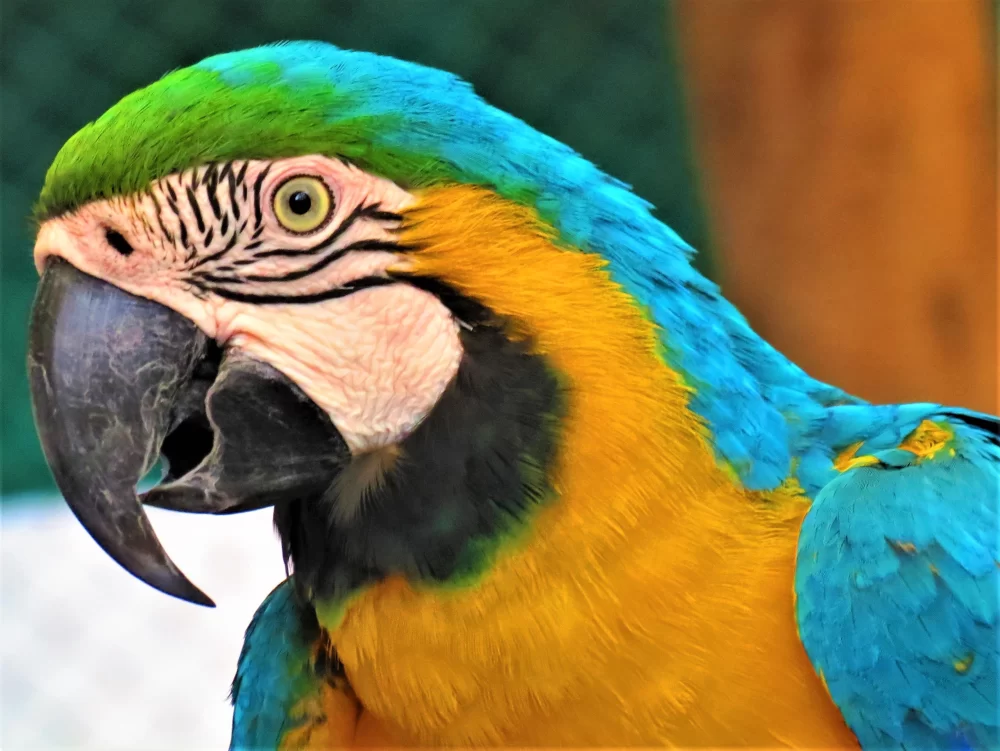- Importance of Cleaning a Bird’s Beak for Overall Health
- Preparation: What You Need Before Cleaning Your Bird’s Beak
- Step-by-Step Guide on How to Clean a Bird’s Beak
- Common Beak Issues and How Cleaning Helps Prevent Them
- When to Seek Professional Help for Bird Beak Care
- Additional Tips for Maintaining Your Bird’s Beak Health
1. Importance of Cleaning a Bird’s Beak for Overall Health
Understanding how to clean a bird’s beak is essential for maintaining your pet’s overall health and comfort. Birds use their beaks constantly—not only for eating but also for grooming, climbing, and interacting with their environment. Dirt, food residue, or buildup on the beak can cause discomfort, affect feeding, or even lead to infections if neglected.
Regular cleaning helps prevent the accumulation of debris and supports the natural wear of the beak. It also allows owners to monitor any changes in beak texture or shape, which might indicate health concerns.
Consider the story of Bella, a cockatiel whose owner noticed her beak had developed crusty buildup, making it difficult for her to eat. After a gentle cleaning routine and veterinary care, Bella’s beak health improved markedly, demonstrating the value of attentive care.
How a Clean Beak Supports Bird Hygiene
A clean beak reduces the risk of bacterial and fungal infections, as these organisms thrive in dirty, moist environments. By regularly cleaning the beak, you help maintain your bird’s hygiene and enhance its quality of life.
2. Preparation: What You Need Before Cleaning Your Bird’s Beak
Before starting to clean your bird’s beak, preparation is vital for a safe and stress-free experience. Gather necessary supplies such as a soft cloth or gauze, warm water, and possibly a bird-safe antiseptic solution recommended by a veterinarian.
Choose a quiet, comfortable space where your bird feels secure. Wearing gloves may provide better grip and hygiene, but gentle handling is key to avoid stressing your pet.
Assessing Your Bird’s Condition First
Observe your bird’s behavior and beak condition closely. If the beak has severe crusting, cracks, or unusual growth, it may require professional attention before home cleaning.
3. Step-by-Step Guide on How to Clean a Bird’s Beak
Cleaning a bird’s beak requires patience and gentle techniques. Here is a detailed method to help you perform this task effectively:
Step 1: Calm and Secure Your Bird
Start by calmly holding your bird in a towel or soft cloth to prevent sudden movements. Speak softly to reassure your pet throughout the process.
Step 2: Moisten the Cloth or Gauze
Dampen the cloth with warm water or a mild bird-safe antiseptic. Avoid using harsh chemicals or soaps that could harm your bird.
Step 3: Gently Wipe the Beak
Carefully wipe away debris, food particles, or buildup from the beak’s surface. Focus on crevices but avoid applying excessive pressure to prevent injury.
Step 4: Check for Any Abnormalities
After cleaning, inspect the beak for cracks, overgrowth, or discoloration. Document any concerns to discuss with your veterinarian.
Step 5: Reward and Monitor Your Bird
Offer your bird a favorite treat to create a positive association with the cleaning routine. Continue to observe its beak condition regularly.
4. Common Beak Issues and How Cleaning Helps Prevent Them
Dirty or neglected beaks can lead to problems such as overgrown beak, fungal infections, and beak deformities. For example, excessive buildup may interfere with the natural wearing process, causing the beak to grow abnormally.
Regular cleaning combined with proper diet and environmental enrichment encourages natural beak maintenance. Providing chew toys and cuttlebones supports healthy beak wear and reduces the need for frequent manual cleaning.
Case Study: Rocky the Parakeet’s Beak Overgrowth
Rocky’s owner noticed his beak was growing unevenly and became difficult to manage. After consulting with professionals and establishing a beak cleaning and care routine, Rocky’s condition improved, underscoring the importance of early intervention.
5. When to Seek Professional Help for Bird Beak Care
While routine cleaning can be done at home, some situations require veterinary care. If your bird’s beak shows signs of injury, severe overgrowth, discoloration, or persistent buildup that does not respond to cleaning, professional evaluation is essential.
Hidden Brook Veterinary provides expert avian care, including safe beak trimming and treatment for infections or deformities. Early professional intervention helps prevent complications and keeps your bird comfortable.
6. Additional Tips for Maintaining Your Bird’s Beak Health
Beyond cleaning, maintaining beak health involves proper nutrition rich in vitamins and minerals, access to natural chewing materials, and a clean living environment.
Regular observation and gentle handling foster trust and allow early detection of problems. Incorporating these practices into your bird care routine supports a healthy and happy pet.
For reliable products and expert advice on caring for your bird’s beak, visit Hidden Brook Veterinary, where you can find suitable tools and professional services tailored to your pet’s needs.












